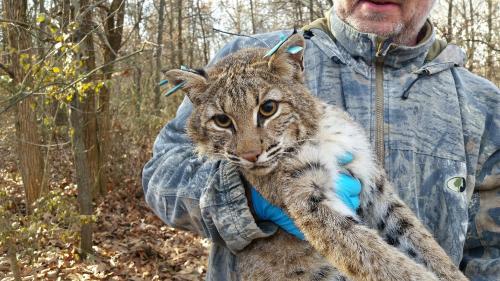University News
WIU Bobcat Research Program Awarded $375,000 Federal Grant
July 15, 2019
MACOMB, IL – A $375,000 federal grant from the United States Fish and Wildlife Service, administered through the Illinois Department of Natural Resources (IDNR), will boost ongoing research at Western Illinois University into the state's bobcat population.
The two-year grant was awarded to WIU Biological Sciences Associate Professor of Wildlife Ecology Chris Jacques to continue field research he has been conducting for several years. The work includes opportunities for WIU students to study bobcat ecology across north central Illinois and allows previous research, funded by a $100,000 IDNR grant, to continue.
"Graduate and undergraduate students are essential for conducting the day-to-day data collection activities, data analyses and synthesis of primary study results," said Jacques. "Without support from the IDNR, ongoing bobcat research at WIU is not possible and would formally end at the end of the calendar year. Continued financial support will facilitate opportunities to expand our work into new regions of the state (i.e., northcentral Illinois) focused on new questions related to reproductive ecology and genetics, which in turn will provide a greater understanding of how fragmented landscapes may influence population structure of bobcats."
The current IDNR grant term ends at the end of the calendar year, and Jacques said further research will benefit the state agency by helping to refine existing bobcat monitoring and management programs across the state.
The work funded by the new grant will continue to use remote cameras to estimate bobcat population densities in north central Illinois. The phased research has previously monitored the bobcat population in west central Illinois and has fitted animals with VHF collars to track seasonal and annual survival and movement status.
Bobcats were captured in McDonough, Fulton, Schuyler and Hancock counties through the winters of 2018 and 2019 and fitted with VHF and GPS radio collars. The research also included using 220 infrared-triggered remote cameras in the winter months, when cameras were working 24 hours a day, seven days a week, over 60-day intervals to photo capture and recapture bobcats for use in density estimation.
For more information on the study, or to get involved, contact Jacques at CN-Jacques@wiu.edu or at (309) 298-2155.
Posted By: University Communications (U-Communications@wiu.edu)
Office of University Communications & Marketing


Connect with us: